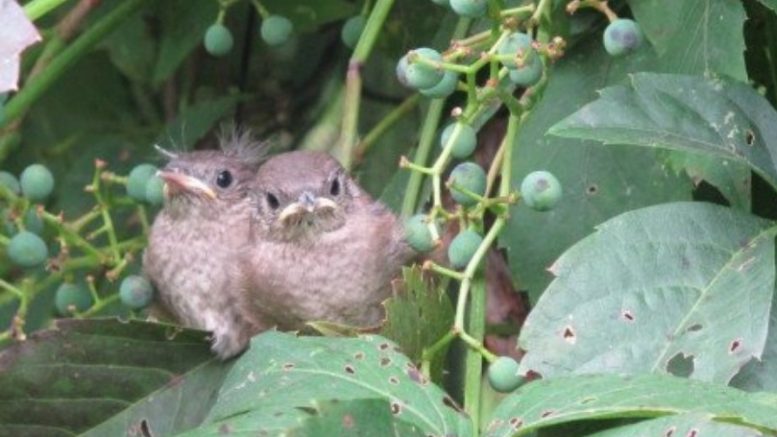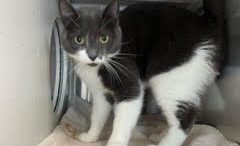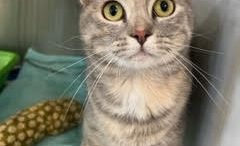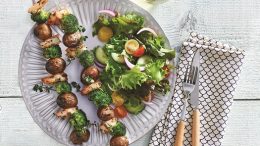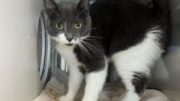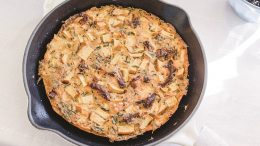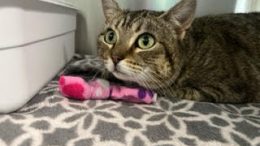Basic steps you can take to make your garden a safe haven for beneficial wildlife.
When I planned my flower and vegetable gardens, I envisioned not only beautiful plants but also a haven for wildlife. Of course, I don’t mean problem wildlife like deer and rabbits, but beneficial creatures such as butterflies, hummingbirds, bees, songbirds, and frogs.
I discovered that all wildlife is increasingly threatened by the loss of natural habitat due to the rate of commercial and residential development, and the way we maintain our homes. To attract birds, butterflies, and other wonderful animals; therefore, we need to restore their habitat.
This is as simple as providing for their basic needs: food, water, cover, and places for them to raise their young. These four conditions that enable wildlife to survive and thrive were identified by the National Wildlife Federation.
On a recent morning, I found five swallowtail butterfly caterpillars on my dill, watched hummingbirds feeding on beebalm (Monarda didyma), and listened to the sweet song of our native sparrow. I will show you how I created this small, wildlife
refuge.
Creating a quality habitat
Provide food
Plant a variety of flowering annuals and perennials that will bloom the entire growing season. Native plants are best, providing natural food sources for birds, small mammals, and beneficial insects such as bees.
Include some nectar plants and host plants to attract butterflies. Butterflies lay their eggs on a host plant; the caterpillars hatch from the eggs and feed on the leaves of the plant. Dill is one of the host plants for swallowtail butterflies, hence the caterpillars in my garden. The caterpillar of the monarch butterfly feeds exclusively on milkweed (Asclepias spp.). Other plants that I grow for butterflies are hollyhock (Alcea spp.), asters (Aster spp.), coreopsis (Coreopsis lanceolata), purple coneflower (Echinacea spp.), Joe pye weed (Eupatorium purpureum), gayfeather (Liatris spp.), and phlox. Zinnia is my favorite annual that supplies nectar for adult butterflies.
A variety of shrubs and trees provide food and cover throughout the year: blackberries, raspberries, Eastern white pine (Pinus strobus), mountain ash (Sorbus americana), and spicebush (Lindera benzoin). Many birds enjoy the fruit of the flowering dogwood (Cornus florida) and serviceberry (Amelanchier spp.) Hummingbirds have long beaks and long tongues for eating nectar from flowers. They are attracted to red, orange, and pink blossoms with petals joined into tubes. Some of their favorites are cardinal flower (Lobelia cardinalis), honeysuckle (Lonicera sempervirens), columbine (Aquilegia canadensis), and wild bergamot (Monarda fistulosa).
You may supplement the food that your plantings provide by setting up bird feeders that hold seed and hummingbird feeders containing sugar-water solutions. Be aware in some parts of Pennsylvania, however, that these feeders may attract bears.
Provide water
Water is essential for any wildlife habitat. Furnish your garden with a simple birdbath such as a saucer, shallow basin, or even a trashcan lid. A birdbath with a misting fountain will entice hummingbirds because they enjoy bathing by flying through a fine mist.
Keep your birdbath clean and filled with fresh water; change the water frequently to discourage mosquitoes. In the winter, consider providing a heated birdbath. A small pond will attract a variety of species and provide entertainment and educational opportunities. Some wildlife, such as frogs, need water to reproduce and raise their young. A healthy backyard pond closely resembles a natural pond. In ours, we created ledges for aquatic plants plus a shallow area and a deeper section. Birds and butterflies are able to dip into the shallower water. Fish survive in the deep parts that do not freeze to the bottom in winter. Pumps, waterfalls, and fountains create a wonderful environment for wildlife. Birds, for example, are attracted to moving water. Keep the water circulating to prevent mosquito larvae from hatching.
Consider providing a puddling dish for male butterflies: mix sand with soil or dung in a shallow pan, fill it with water, and place it in a sunny area. Male butterflies will be seen puddling in the muddy dish–they are gathering and lapping up liquid that is full of minerals.
Provide cover and places to raise their young
You can attract a great diversity of wildlife by providing multiple layers of vegetation: plant clusters of shrubs like winterberry (Ilex verticillata) and viburnums (Viburnum spp.); small trees such as chokecherry (Prunus virginiana) and American holly (Ilex opaca); plus tall trees, for example American beech (Fagus grandifolia) and balsam fir (Abies balsamea). Evergreens, especially important in colder regions, provide shelter from the winter weather. If possible, plant them on the northwest side of your lot to block cold winds.
Plants that furnish cover and a retreat from predators also provide nest sites. Woodpeckers, chickadees, and nuthatches nest in cavities in living and dead trees — dead trees are called snags. Snags show the importance of dead vegetation as a source of cover for insects and invertebrates. We have created log and brush piles on our property to form “wildlife hotels.” A rock feature in your garden is particularly attractive to creatures that depend upon their surroundings for temperature regulation. For example, many butterflies need places where they can bask in the sun. In addition to natural nesting places, you may provide cavity-nesting boxes.
Practice sustainable gardening
Sustainability means not doing harm to the environment or depleting natural resources. It is vital to practice sustainable gardening when you are restoring wildlife habitats. First, reduce or eliminate chemical pesticide use. Insecticides kill beneficial insects as well as nuisance ones. Herbicides eliminate sources of food for caterpillars, thus harming the butterfly population.
Next, remove invasive nonnative plants that aggressively take over natural habitat. Invasive species in Pennsylvania include multiflora rose (Rosa multiflora) and Japanese stilt grass (Microstegium vimineum). Thirdly, limit the amount of lawn. Lawn offers very little food or cover to most animals while requiring a lot of maintenance. You may replace lawn grass with ground cover plants or perhaps make a butterfly garden.
There are many excellent reasons to garden including the love of watching plants grow, the health benefits of being active outdoors, and the joy of creating beautiful spaces. But what better reason than attracting birds, butterflies, and other beneficial wildlife to your backyard by restoring their natural habitats?
This educational blog is a series of informative articles from the Penn State Master Gardeners volunteers plus news concerning the group and their activities. For more information, click here.

